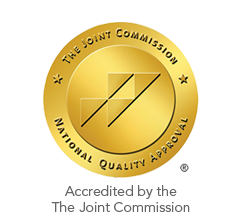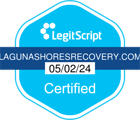 Triple C is a popular name for Coricidin Cough & Cold. The medication, which is sold as a decongestant and cough suppressant, is available without a prescription. In fact, you can easily buy 24 and 48-count boxes on Amazon or at most drug stores, including Walmart. This makes the drug incredibly popular with teens and young adults, who can buy the drug with little effort.
Triple C is a popular name for Coricidin Cough & Cold. The medication, which is sold as a decongestant and cough suppressant, is available without a prescription. In fact, you can easily buy 24 and 48-count boxes on Amazon or at most drug stores, including Walmart. This makes the drug incredibly popular with teens and young adults, who can buy the drug with little effort.
Triple C offers a high through its main active ingredient, the cough suppressant dextromethorphan. In fact, some variations have as much as 10mg of the active ingredient per pill. While 15 states banned the sale of dextromethorphan products to teens in 2020, most states still allow it. And, while Coricidin HBP Cough & Cold is a well-known brand, many other brands, including generic ones, exist. Therefore, Triple C is also referred to as Dex, DXM, Skittles, and robo.
It’s important to understand how Triple C’s work and what they do if you want to protect yourself or a loved one from the drug.
Table of Contents
ToggleWhat are Triple C’s
Triple C’s are the common cough suppressant, dextromethorphan. The drug gets its popular street name from one of the first retailers of the cough suppressant, Coricidin Cough & Cold. The pills were printed with CCC. Today, while there are many generic and brand alternatives, CCC remains popular.
Most Corocidin cough medicine is available in pills. These are dosed in 2.5-10mg and are intended, in low doses, to reduce the effects of congestion and coughing. However, in large doses, they cause hallucinations, euphoria, auditory changes, and changes in the sense of gravity. “High” users may describe sensations of floating and disassociation, like “living in a dream”.
In fact, Dex is in the same drug class as ketamine, a dissociative anesthetic. The drug works by blocking the effects of the NMDA glutamate receptor, causing the high.
Effects of Triple C Pills
Triple C’s cause a different high depending on the dose and duration of effects. These are divided into four “plateaus”. Seek immediate advice or rehab in Orange County when this happens.
Plateau 1
This is reached with a 1.5-2.5 mg dose per kilogram of body weight. Essentially, a 120 lb. teen would have to take 82.5-138 mg of Triple C to reach this effect. That’s about 8-14 maximum-strength gel caps. This stage causes euphoria, auditory changes, and feelings of floating.
Plateau 2
This stage is reached with a 2.5-7.7 mg dose, or 138-412 mg for a 120 lb. teen. Here, feelings of euphoria intensify. The individual might experience hallucinations when closing their eyes.
Plateau 3
At the third “plateau”, most users are prone to experiencing altered consciousness, and heavy hallucinations. This is not normally dangerous, but they may lose vision. Depending on body weight, plateau 3 is reachable at 7.5 mg per kg of body weight and up.
Plateau 4
The user is unlikely to feel or sense their body and will instead experience only hallucinations. This may be dangerous. It can be reached at doses of 7.5mg per kg of body weight and up, depending on metabolism.
Some teens take doses of 15-20 mg of dex per kilo of body weight as a standard dose. This means a 125 kg teen would take 4 packages of a 24-count pack of extra strength cold medicine to achieve this state.
Most dextromethorphan pills have an active effect of 4-12+ hours or an average of 6. In individuals with a slow metabolism, this can last for 24 hours or more. This can be dangerous because the drug stays in the system for an additional 24 hours following that. If the individual chooses to take another dose the following night, they could reach lethal levels, which start at 50mg per kg of body weight.
Be Brave. Get Help.
Negative Side Effects of Triple C Cough Medicine
 Triple C also has a lot of very obviously “negative” side effects other than hallucinations and inability to move or control limbs. Early symptoms of use include:
Triple C also has a lot of very obviously “negative” side effects other than hallucinations and inability to move or control limbs. Early symptoms of use include:
- Red or watering eyes
- Slurring speech
- Stomach pain
- Blurry vision
- Poor muscle control
- Irregular heartbeat
- Nausea
- Rashes
- Itchy skin
- Hypertension
In most cases, you can’t tell someone is using Triple C by side effects alone. Instead, you’ll have to come to the conclusion that they’re high and work out what it is separately. Normally, that’s easy if they leave boxes in the trash, have red pills, or you know their friends are using it.
Is Triple C Dangerous?
Triple C can cause overdose in very large doses, however, this is unlikely. Most stores know that teens and adolescents abuse the drug and don’t sell it in large quantities. Therefore, most actual doses of Dextromethorphan are not anywhere near lethal. However, the long-term risks of Triple C abuse can be considerable.
Acetaminophen – Triple C contains large doses of the painkiller acetaminophen. While one of the safest drugs on the market, Acetaminophen causes liver damage at doses over 4000 mg. That’s important, considering just one Maximum Strength CCC pill has 300 mg of acetaminophen. So, a teen taking just half a package (or 100 mg of dex) would be exceeding their daily limit of acetaminophen. Over time, Triple C abuse does contribute to liver damage.
Addiction – While Triple C has a light addiction profile, it does eventually result in dependence and then addiction. In one survey, heavy Triple C users reported experiencing withdrawal symptoms for roughly 1 week following quitting. These include:
- Fatigue
- Flashbacks
- Constipation
- Insomnia/sleep problems
- Anhedonia,
- Memory problems
- Attention problems
- Panic attacks
- Tremor
- Hives
- Toxic psychosis
Essentially, over the short term, Triple C is unlikely to cause addiction or dependence. Over the long term, that changes. Individuals with a long history of abusing the drug may need professional drug addiction treatment to overcome mental reliance and behavioral problems.
Long-term, Triple C abuse can also contribute to kidney stones, permanent brain damage, and liver or kidney failure.
Essentially, Triple C can be dangerous in high doses. When abused, otherwise benign drugs, like acetaminophen can also contribute to health problems. Most importantly, those health problems may not arise right away, but will likely continue to worsen throughout the individual’s life.
Is Your Teen Using Triple C Drug?
 It’s difficult to tell what drug someone is using, but you can usually get a good idea if someone is using it or not. Common “tells” include:
It’s difficult to tell what drug someone is using, but you can usually get a good idea if someone is using it or not. Common “tells” include:
- Changes in behavior and habits
- Lack of attention to personal appearance or grooming
- Falling asleep and being unresponsive
- Slurring or acting drug
- Loss of balance or coordination
- Missing money, valuables, pills
- Drops in performance at work, school, home
- Mood swings, irritability, and anger
- Inability to enjoy former hobbies
Many of these symptoms can also relate to other things. If your child is showing them, it may be a good idea to talk to a therapist or counselor, whether or not you find any evidence of drug use.
Ultimately, talking to the person who may be using Triple C is likely the best idea. He or she will likely lie, but it’s a good idea to offer support, to offer help, and to firmly share that you want the best for them, and that means being healthy. Often it may be necessary for the person to enter a drug addiction treatment program. If the addict is a teen, there are also treatment centers designed for teens and youth.
If you have questions about your drug use or that of a loved one, please contact one of our treatment advisors at Laguna Shores Recovery today.

 It's difficult to tell what drug someone is using, but you can usually get a good idea if someone is using it or not. Common “tells” include:
It's difficult to tell what drug someone is using, but you can usually get a good idea if someone is using it or not. Common “tells” include:  Matthew Beck B.A, M.A, LMFT
Matthew Beck B.A, M.A, LMFT 


